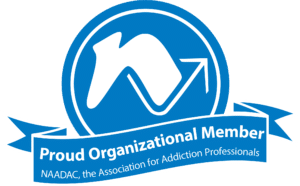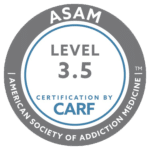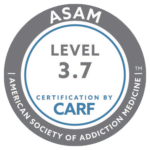
However, it can be difficult to find an effective and healthy release. For that reason, some people turn to self-harm. As the name indicates, this is damaging to the person. Anyone who engages in self-harm needs to stop what he or she is doing immediately. Unfortunately, quitting this habit, which is a way to feel better, is not always so easy. Here is what you need to know about recovery from self-harm and how to move forward.
What Is Self-Harm?
Self-harm is the process of hurting yourself in response to overwhelming emotional sensations. For many people, this takes the form of “cutting.” Cutting is when someone takes a knife or blade to inflict wounds on different parts of their body. While cutting is one of the most popular methods, self-harm manifests itself in various ways. Other methods include:
- Self-inflicted burns — Burns are very similar in nature to cutting. People will burn themselves to get a rush or release from the pain. This activity will likely lead to scars that can last on the body for a lifetime.
- Drug or alcohol abuse — Drugs and alcohol have adverse effects on the body. Instead of showing the self-harm on the skin like visible cuts or burns, the damage takes place internally. Abusing drugs is a slow form of suicide, especially if the abuse is regular.
- Poisoning — Some people will actually drink or eat poisoned items to make themselves sick. This could be literal rat poison or chemicals put into food or drink, or it can be items that the person is allergic to. The poison will eat at the person’s insides and hinder daily activity.
- Punching or hitting — Many people will end up punching or hitting themselves when they are frustrated with themselves. These people may also punch the walls in their homes and hurt their hands. The hands will be visibly injured, and there may be bruises or broken bones in the face.
Causes
Many people wonder what could possibly make a person want to hurt himself or herself. It just doesn’t make sense to most people. There are a number of possible causes, but most of them come down to mental illness.
Many people struggle with managing their emotions. These people may suffer from a personality disorder, bipolar disorder, depression, schizophrenia, or anxiety. When emotions bottle up, self-harm can provide a release. For people who feel numb and who aren’t feeling much at all, self-harm can provide some sort of sensation that can actual be felt. For others, it can provide an adrenaline rush when things get a bit too boring.
Dangers of Self-Harm
Self-harm is obviously harmful to the body. Even small damage can have significant ramifications down the line. The body can only take so much before it starts to break down. This is especially true if the self-harm involves drugs, alcohol, eating disorders, or poisoning. These things will attack your insides and possibly even damage your organs after time. In the worst cases, self-harm can even lead to death.
One of the most dangerous parts of self-harm is that it becomes so familiar to someone. While one person may decide to smoke a cigarette when stressed, another one may practice self-harm instead. When hurting yourself becomes common practice, it can be more difficult to stop the behavior.
How to Identify a Problem
If you suspect someone might be engaging in self-harm, you want to look for clues before you confront him or her. Some symptoms to look for include:
- Scars
- Cuts
- Bruises
- Bite marks
- Frequent accidents
- Always wearing long sleeves
- Self-loathing comments
- Impaired behavior
Keep your eyes open. A couple of bruises or one day of getting too intoxicated may not necessarily indicate self-harm. You want to look for patterns of behavior as opposed to one incident.
If you notice actions or signs that are concerning, it can be difficult to start a conversation. Start by picking the right place and time. When you go into the conversation, maintain a positive attitude. You should also be prepared for some resistance. Continue the conversation with empathy in order to move forward.
When you have this conversation, you want to have a plan in mind. At the very least, you should provide literature for a rehabilitation facility and some additional options. If the person continues to practice self-harm and refuses to get help, you may need to get the authorities involved. Do your best to make this action a last resort while also keeping everyone safe.
Treatment
If you or somebody you love struggles with self-harm, help is available. You just need to seek it out. There are a number of treatments that can help train sometime to stop self-harming behavior. Learn more and discover which might be the right for your situation.
Rehabilitation is an inpatient treatment that focuses on addiction recovery as well as mental health. This is the best course of action for people who are actively practicing in physical self-harm or contemplating suicide. A team of medical professionals will monitor your progress and will keep you in a safe environment that will not allow you to hurt yourself while under their care. There will likely be a number of rules, but this is the most intensive and most effective treatment. Rehabilitation is particularly helpful for people who partake in drugs and alcohol as part of their self-harm.
Therapy is the most common way of dealing with self-harm. There are professional therapists who specialize in self-harm habits. These therapists can help you dive into why you practice self-harm in the first place and then can help you create a plan to stop the behavior. There are a number of different trains of thought when going into therapy. Some of the theories include:
- Cognitive Behavioral Therapy (CBT) — This type emphasizes identifying negative thoughts and behaviors. The goal is to replace those behaviors with more positive thoughts and behaviors. The idea behind this therapy is to train the mind.
- Mindfulness Based Therapy — This version of therapy emphasizes being in the present. When you live in the present, you will be able to analyze your behavior more clearly. Hopefully, you will see bad patterns and take steps to make changes. Being in the present is also a way to help reduce the anxiety that can cause the negative feelings in the first place.
Find a therapist who uses an effective technique for you. When you bond with your therapist, you will feel more comfortable opening up to them.
Medications
Since self-harm generally stems from a mental disorder, medication aimed at managing your mental disorder can be helpful in stopping self-harm. Antidepressants and antianxiety medications can balance your neurotransmitter levels. When you are balanced, you may have more control over your feelings and your actions.
Tips to Stop Self-Harm
The road to recovery is a journey, and you may find yourself slipping on bad days. It’s crucial to have specific tactics to help yourself when you find yourself considering self-harm. Here are some tips on how to reduce self-harm.
- Find support — You want to develop a support system to fall back on when you are struggling. There are numerous people who have gone through the same thing and who can relate to your situation. You can meet people in support groups online or in person. Talk to people who have come a long way in their recoveries and who demonstrate success. Such a person may even become a sponsor.
- Surround yourself with positivity — When in recovery, you need as much positivity as possible. Start with reciting positive affirmations in the morning. Continue to surround yourself with positive music, literature, and television. If you are struggling to stay positive, work on training your brain to think in a more positive way.
- Eliminate triggers — Certain people, places, and things act as triggers for someone struggling with self-harm. Triggers are things that bring people to want to hurt themselves. You need to eliminate the triggers in your life. First, you need to recognize what those triggers are. Look into your behavior to find patterns. Do you tend to cut after meeting with a specific person or after doing a particular thing? You need to reduce or completely eliminate those triggers from your life to lower the chance that you will want to hurt yourself. This could be separating from certain people in your life, or certain environments you should aim to avoid going forward if at all possible.
- Continue treatment — Do not make the mistake of thinking that you will be cured when you walk out of rehabilitation. The tendency for self-harm is a condition that will require extensive treatment. Continue treatment once you get home. Therapy is a great way to move forward once you are home from in-patient treatment. Talk to staff to come up with an aftercare plan together before you leave.
- Prevent self-harm — Once someone engages in self-harm, it becomes a vicious cycle. The person will become almost dependent on the harmful behavior. It can make that individual feel badly about himself or herself, so he or she will engage in harmful behavior to cover the negative feelings. It’s best to stop the problem before it starts.
How to Prevent Self-Harm
Here are some ways to prevent self-harm:
- Talk about it — Many people don’t understand self-harm, so it can be difficult to talk about the topic. However, it’s important to talk about the feelings that cause self-harm, the feelings during self-harm, and the feelings that come after self-harm. Discuss how this tendency affects other people and how it can hurt someone’s future when you see depictions in the media. You should also talk about what to do if you ever get the urge to hurt yourself.
- Provide therapy — Most cases of self-harm require professional help. If someone has mental illness, you need to address the mental illness. Handling the negative feelings properly can stop self-harm before it happens.
- Find ways to cope — There are much better ways to handle things than self-harm. It’s best to learn and to practice alternative coping methods as soon as possible. You will not be able to get rid of the emotions, but you can handle them better. Some coping mechanisms include:
-
- Getting creative
- Exercising
- Venting
- Practicing self-care
- Engaging in a favorite hobby
If you or someone you love struggles with self-harm, it’s time to talk to a professional about getting help today. Self-harm doesn’t only hurt the person with the scars but also the other people in that person’s life who care about him or her. Call Granite Recovery Centers to discover the treatment program that’s right for you.






